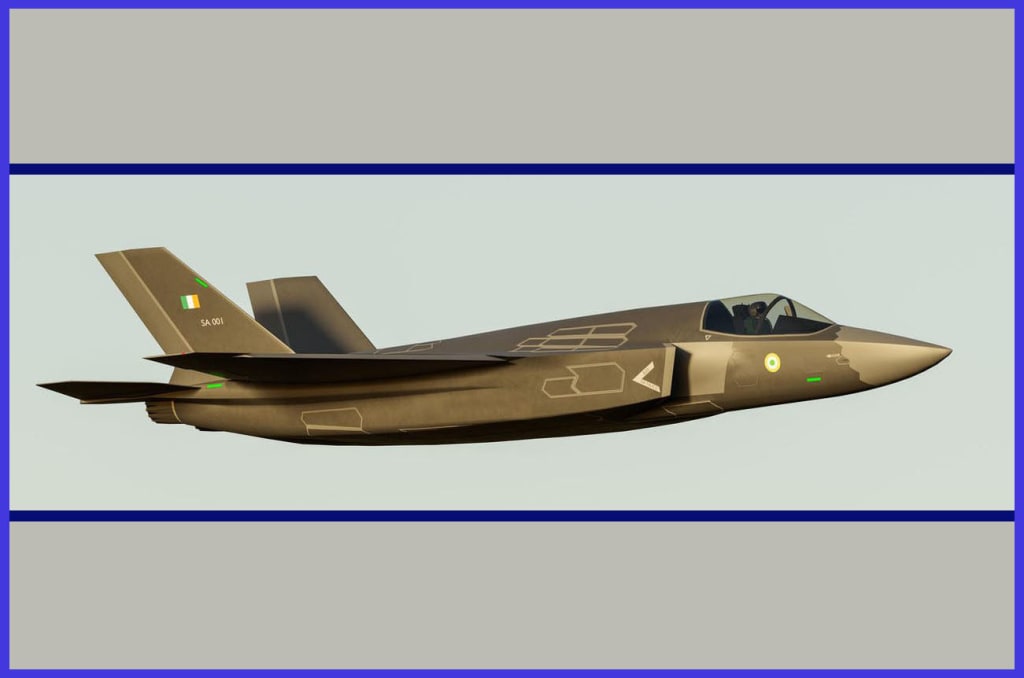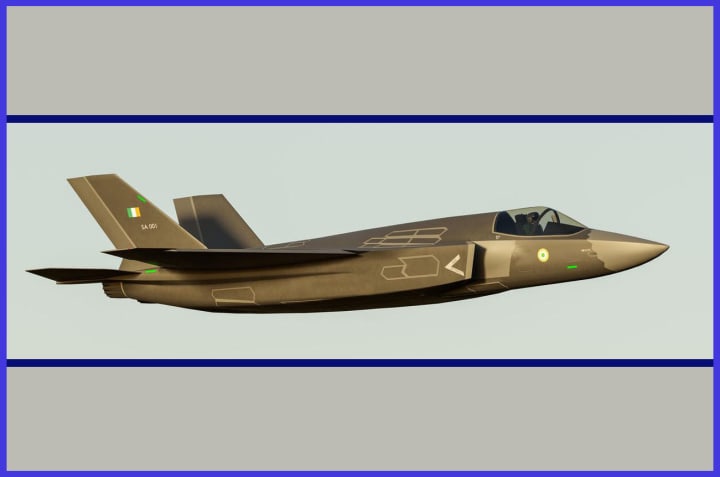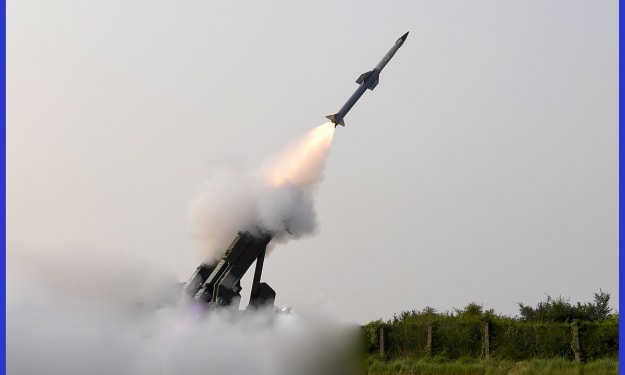Elevating India's Airpower Project: Discovering the Best in the AMCA Stealth Aircraft
By Prajesh Majumdar

The Finest Step Towards Self-Reliance!! Discover the Best of the 5th Gen Stealth AMCA Aircraft under development by India. Designed to operate in both air superiority and ground attack roles, the AMCA (Advanced Medium Combat Aircraft) boasts advanced stealth capabilities to minimize its radar signature, making it extremely difficult for enemy air defences to detect and track. Its sleek and aerodynamically efficient design, combined with radar-absorbing materials, enhances its low observability. The aircraft is expected to offer superior agility, situational awareness, and electronic warfare capabilities, positioning it at the forefront of modern aerial warfare technology and strengthening India's national defence capabilities.
Under the purview of the Defence Research and Development Organisation (DRDO), the Aeronautical Development Agency (ADA) is entrusted with the responsibility of aircraft design. The DRDO, Hindustan Aeronautics Limited (HAL), and a private Indian corporation are expected to collaborate on its production as part of a public-private joint venture. The AMCA will be equipped with advanced radar systems, cutting-edge avionics, and a range of precision-guided weapons. It will possess the capability to deploy both air-to-air and air-to-ground munitions, rendering it a versatile asset for the Indian Air Force and the Indian Navy.
The aircraft in question is designed to be a single-seat, twin-engine configuration. The initial variant, referred to as the Mark 1, is set to incorporate 5.5 generation technologies, while the Mark 2 will introduce progressive 6th generation technology enhancements. The Advanced Medium Combat Aircraft (AMCA) is envisioned to undertake a diverse range of missions, encompassing air supremacy, ground-strike capabilities, the suppression of enemy air defences (SEAD), and electronic warfare (EW) missions. It is intended to serve as a formidable replacement for the Sukhoi Su-30MKI air superiority fighter, which currently constitutes the core of the Indian Air Force's fighter fleet.
As reported by The Indian Express in early 2023, the Defense Research and Development Organization (DRDO) has successfully completed the design phase of the aircraft. The organization is presently awaiting a "Critical Design Review" to ensure the system's readiness for further stages involving fabrication, demonstration, and testing, ensuring that it meets the requisite performance standards. The estimated development cost for the AMCA project stands at approximately ₹15,000 crore, which is equivalent to around $2 billion.
Development Program of the AMCA
Conceptualization: The program was strategically crafted to bridge the gap between the heavyweight Sukhoi Su-30MKI and India's Light Combat Aircraft (LCA). Its primary goal is to equip the Indian Air Force with a cutting-edge, domestically developed, versatile stealth fighter. This endeavour by India to create a fifth-generation fighter is known as the AMCA, formerly referred to as the Medium Combat Aircraft (MCA) program. It initially stood as a competitor program before evolving into the Indo-Russian Sukhoi/HAL FGFA.
In the year 2010, the AMCA program was officially launched. It's worth noting that the AMCA currently falls within the 25-ton class fighter category, although its original design aimed for a 20-ton class fighter. The journey commenced in October 2010 with a feasibility study, followed by the project definition and preliminary design stages in 2013.
Prototyping and Testing: The program encompasses the creation of prototype aircraft for comprehensive testing and validation. This phase entails rigorous flight testing and evaluation to refine the aircraft's capabilities. Over the period from November 2013 to December 2014, an extensive review was carried out, considering nine different AMCA design configurations, denoted as 3B-01 through 3B-09. This comprehensive evaluation involved the utilization of computer-aided design (CAD), assessments in both low- and high-speed wind tunnels and radar cross-section (RCS) testing.
By the close of 2014, the configuration 3B-09 was selected. In 2015, the fundamental design configuration of the AMCA was solidified and received approval from the Indian Air Force (IAF) in 2016. It's important to note that as of October 2022, the AMCA is still pending approval from the Cabinet Committee on Security (CSS), a crucial step in the development of the prototype. The prototype can be released in three years, and the maiden flight can happen one to one and a half years after that, according to Dr. A.K. Ghosh, project director of AMCA.
"Welcome to AirPra! "Dive In and Explore the Complete Article"

About the Creator
Prajesh Majumdar
Hi there, I'm Prajesh, the creator of airpra.com
The site is dedicated to nurturing a community of individuals with a keen interest in exploring the intricate aspects of defence equipment and related news.
Enjoyed the story? Support the Creator.
Subscribe for free to receive all their stories in your feed. You could also pledge your support or give them a one-off tip, letting them know you appreciate their work.






Comments
There are no comments for this story
Be the first to respond and start the conversation.